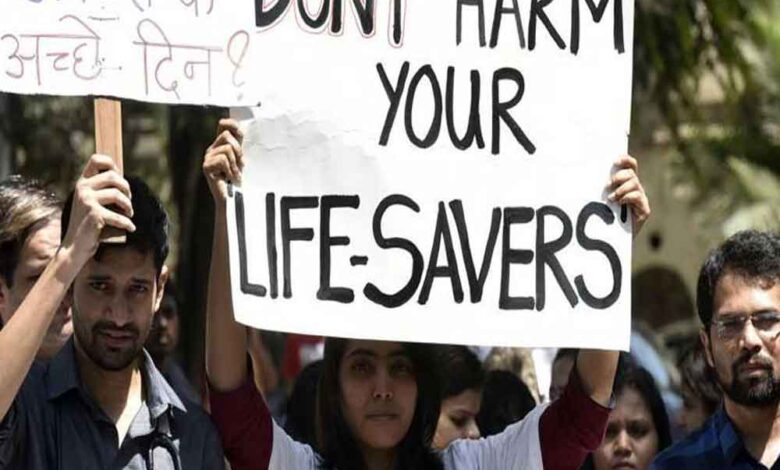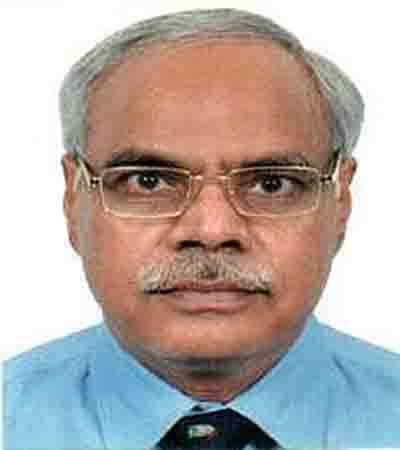GUEST COLUMN : The alarming phenomenon of violence against health workers

 Dr BKS Sanjay
Dr BKS Sanjay
Violence against health workers is not a simple problem and hence it needs an in-depth analysis by the various professionals ranging from medical personnel, police department, social workers, judiciary, psychologists and psychiatrists. Violence against doctors is a worldwide phenomenon which is a serious matter to ponder over. According to the World Health Organisation WHO, 8- 38 per cent of health workers suffer from physical violence at some point of time in their career.
The situation is pathetic particularly for female health workers, be it a doctor or a nurse or any other paramedic. They are more prone to sexual violence. The alleged rape and murder of a lady doctor recently at RG Kar Medical College in Kolkata is just the tip of the iceberg. This incident has elicited the attention of Indian mass media and social media along with political and judicial authorities. Protests were held against this crime across the nation. The author himself participated in a march and paid tribute to the victim at a condolence meet held at his centre. Public outrage has forced the political and judicial authorities to take some action. Under the mounting pressure and allegations of mishandling by State authorities, the Supreme Court has taken suo moto cognisance of the Kolkata case. The Kolkata High Court has ordered the SIT to transfer the investigation documents and assigned the CBI to further investigate the case.
Doctors and health workers function under stressful conditions most of the time during their careers, particularly in emergency situations. In such cases, in spite of having deep knowledge and wide experience in the medical profession, it often becomes difficult to predict the possible outcome in emergency situations. Unfortunately, the problem is complicated further because of the prevalence of poverty, illiteracy and ignorance. Certain times, the patient’s family and friends cannot perceive the severity of the problem. I would like to cite a few examples of medical complications here like fat embolism.
The complication of fat embolism is well documented in medical textbooks and in other literature after a closed fracture of the shaft of the femur, which at times can be life threatening. There are also cases like the complication of pulmonary embolism after a major injury or a major surgery in the limbs. Another common incidence of drug reaction is also very well documented in the literature. Drug reaction is one of the known complications. Though rare, it can be life threatening at times. This can happen with anybody at any time with any drug but it is more common with antibiotics. A friend of the author, who was a surgeon himself, had developed an anaphylactic reaction with injectable cefuroxime which is a commonly used prophylactic antibiotic. Following the reaction, he went into a coma for more than ten years and later succumbed to the reaction. I have more than 45 years of spinal surgery experience and have operated thousands of spine patients so far. One of the patients who was operated upon was brought by her nephew, sister and sister-in-law. The nephew complained that his aunt had vague back pain but on examination it was found that the pain was not related to the back surgery. However, a local doctor she had consulted had said that the pain was due to the loosening of a hook. In fact, it was lumbar disk surgery and no implant was used. The hooks which were visible were hooks of the bra. The family was arguing that the pain was because of the hooks. There was a verbal argument and the patient’s relative started abusing and threatening. The police were called to sort out the matter. It seems the situation had escalated due to ignorance of the patient and relatives along with poor knowledge of a local doctor and the poor communication skill of the doctor treating her. Such things occur daily everywhere.
Causes
Retrospectively analysing the various incidents encountered by myself or by my close colleague and from many other incidents reported in the media I would like to recall some instances. Having worked in institutions like PGI Chandigarh and Safdarjung hospital in New Delhi and being in-charge of the emergency department of orthopaedic surgery in PGI Chandigarh, I thankfully did not encounter any incident of violence against me or any of the health workers in these institutions during my tenure.
I worked for more than three years in Safdarjung hospital, New Delhi which is one of the largest public hospitals for orthopaedic patients, where the total daily OPD was over 300 patients a day in the early 1980s. I mention this because it was a large, reputed, free public hospital and was the last hope for many poor patients and their relatives. In such hospitals there is less possibility of violence against health workers. Even if at times, the patient undergoes mortality or does not get the expected results, the relatives ignore it rather than going for any kind of assault. Contrary to that in smaller hospitals, doctors generally have less experience when comparing the number of patients they deal with. All the services they have to offer cannot be at par with infrastructure of a large medical college like AIIMS or PGIMER, Chandigarh and that too at a huge cost. Therefore, the patients and their relatives feel that they have been cheated especially when large sums of money are involved. When such perceptions and ignorance are persisting, they often lead to conflict sometimes resulting in violence and altercation.
Prevention
Disputes and conflicts are prevalent in all spheres of society but the police department and judiciary are there to sort out such disputes. Similarly, disputes between patients and doctors should not be sorted out through violence but in a civilised and legal way and any kind of street justice is not desirable in medical practice. In the prevailing lifestyle, everyone will need medical services at some point of life. As it is said if there is birth, there is development, disease, degeneration and death.
Behaviour is the first thing which influences the results, irrespective of any profession. Most of the problems can be sorted out with acceptable behaviour itself. That means that doctors and health workers not only need medical knowledge but also good behaviour and communication skills to maintain a good interpersonal relation with the patient and his family.
Even the patient and family should keep in their mind that health workers are also human. Things can go wrong after a certain decision. Usually, decisions taken by doctors are for the well-being of their patients but in a small fraction even those decisions may backfire and, in such cases, even the patients and their relatives should behave in a humane way.
Suggestion
Every hospital should have a counselling centre for healthcare workers as well as for patients and relatives. Only the permitted people should enter in the hospital premises just like any government higher offices. This is the era of digital technology and surveillance. Therefore, CCTV cameras should be placed in all areas in addition to sensitive areas like emergency, ICU and CCUs. It is the simple and easier way to monitor activities of the health care workers, the patients and their attendants. Every hospital should have a complaint and suggestion box which should be monitored by the appropriate authority.
Any sexual violence against any female health worker should be brought to the notice of the appropriate authorities of the hospital at the earliest. Any new appointee should be subjected to police enquiry and every employer should get the comment from the previous employer particularly about his/her character. The legal provisions against sexual violence should be enforced diligently and at the earliest, preferably within three months and the culprit should be given exemplary punishment considering the fact if the punishment is not painful it cannot really be a punishment.
(A Padma Shri recipient, the author is an orthopaedic surgeon based in Dehradun. Views expressed are personal)






